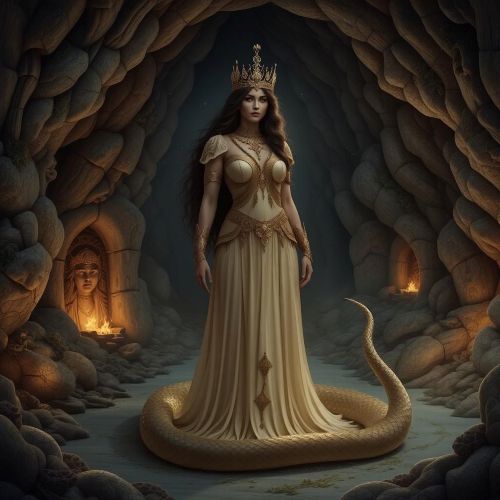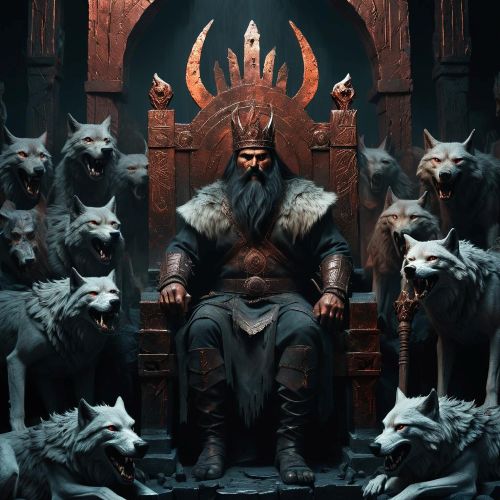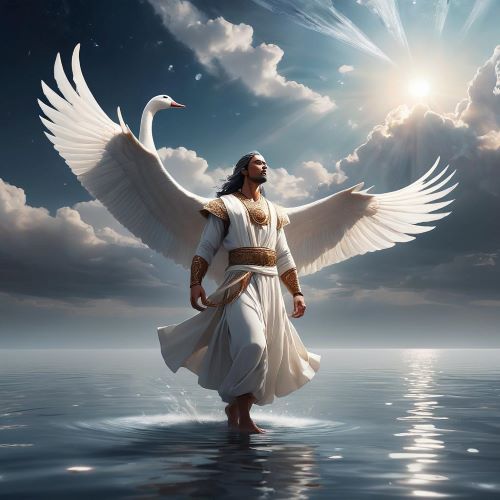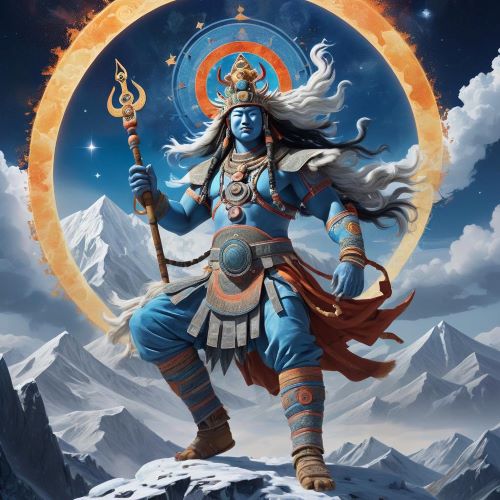Turkic Gods
Turkic Gods are central to the ancient belief systems of the Turkic peoples, whose cultures spread across vast regions of Central Asia, Siberia, and parts of Eastern Europe. These deities formed the core of Tengrism, the spiritual tradition followed by many Turkic tribes before the spread of organized religions like Islam and Buddhism. The Turkic pantheon includes sky gods, earth spirits, and ancestral figures, all deeply connected to nature, the elements, and the cycles of life. Reverence for these divine beings helped shape the customs, governance, and worldview of Turkic societies.
At the heart of the Turkic pantheon is Tengri, the eternal blue sky god, who represents supreme power and universal order. Tengri was not only worshipped as the highest deity but was also viewed as the source of justice, fate, and cosmic harmony. He was believed to guide the destiny of both individuals and entire nations, especially khagans or rulers who were considered chosen by divine will. Alongside Tengri stood other prominent Turkic Gods like Umay, the goddess of fertility and motherhood, and Erlik, the lord of the underworld and death, who controlled the spirits of the dead and tested human morality.
Many Turkic Gods reflected the duality of nature and human experience. While Tengri symbolized life and the heavens, Erlik embodied darkness and the lower world. This balance between light and dark, creation and destruction, was a defining feature of Turkic spiritual beliefs. Deities also governed natural elements such as fire, water, and the wind, which were crucial for nomadic life on the Central Asian steppes. Rituals, sacrifices, and ceremonies were performed to honor these gods and maintain harmony between the spiritual and physical realms.
The mythology of the Turkic Gods was passed down through oral traditions, epic tales, and shamanic rituals. Shamans acted as mediators between the gods and humans, invoking divine powers for healing, guidance, and protection. These stories and practices have survived through folklore, historical texts, and the cultural memory of Turkic descendants. Though many of these traditions faded with the rise of monotheistic religions, the legacy of the Turkic Gods remains a strong cultural and spiritual foundation for many communities across Asia.
Understanding the Turkic Gods provides a window into a rich and resilient spiritual tradition. These deities shaped not only the religious life of the ancient Turkic peoples but also their values, art, and identity. Today, renewed interest in indigenous beliefs has brought the Turkic Gods back into focus, highlighting their timeless relevance and the enduring connection between people and the natural world. Whether you’re drawn to the majesty of Tengri or the complexity of Erlik, the pantheon of Turkic Gods continues to inspire awe and curiosity.
Turkic Gods are central to the ancient belief systems of the Turkic peoples, whose cultures spread across vast regions of Central Asia, Siberia, and parts of Eastern Europe. These deities formed the core of Tengrism, the spiritual tradition followed by many Turkic tribes before the spread of organized religions like Islam and Buddhism. The Turkic pantheon includes sky gods, earth spirits, and ancestral figures, all deeply connected to nature, the elements, and the cycles of life. Reverence for these divine beings helped shape the customs, governance, and worldview of Turkic societies.
At the heart of the Turkic pantheon is Tengri, the eternal blue sky god, who represents supreme power and universal order. Tengri was not only worshipped as the highest deity but was also viewed as the source of justice, fate, and cosmic harmony. He was believed to guide the destiny of both individuals and entire nations, especially khagans or rulers who were considered chosen by divine will. Alongside Tengri stood other prominent Turkic Gods like Umay, the goddess of fertility and motherhood, and Erlik, the lord of the underworld and death, who controlled the spirits of the dead and tested human morality.
Many Turkic Gods reflected the duality of nature and human experience. While Tengri symbolized life and the heavens, Erlik embodied darkness and the lower world. This balance between light and dark, creation and destruction, was a defining feature of Turkic spiritual beliefs. Deities also governed natural elements such as fire, water, and the wind, which were crucial for nomadic life on the Central Asian steppes. Rituals, sacrifices, and ceremonies were performed to honor these gods and maintain harmony between the spiritual and physical realms.
The mythology of the Turkic Gods was passed down through oral traditions, epic tales, and shamanic rituals. Shamans acted as mediators between the gods and humans, invoking divine powers for healing, guidance, and protection. These stories and practices have survived through folklore, historical texts, and the cultural memory of Turkic descendants. Though many of these traditions faded with the rise of monotheistic religions, the legacy of the Turkic Gods remains a strong cultural and spiritual foundation for many communities across Asia.
Understanding the Turkic Gods provides a window into a rich and resilient spiritual tradition. These deities shaped not only the religious life of the ancient Turkic peoples but also their values, art, and identity. Today, renewed interest in indigenous beliefs has brought the Turkic Gods back into focus, highlighting their timeless relevance and the enduring connection between people and the natural world. Whether you’re drawn to the majesty of Tengri or the complexity of Erlik, the pantheon of Turkic Gods continues to inspire awe and curiosity.






